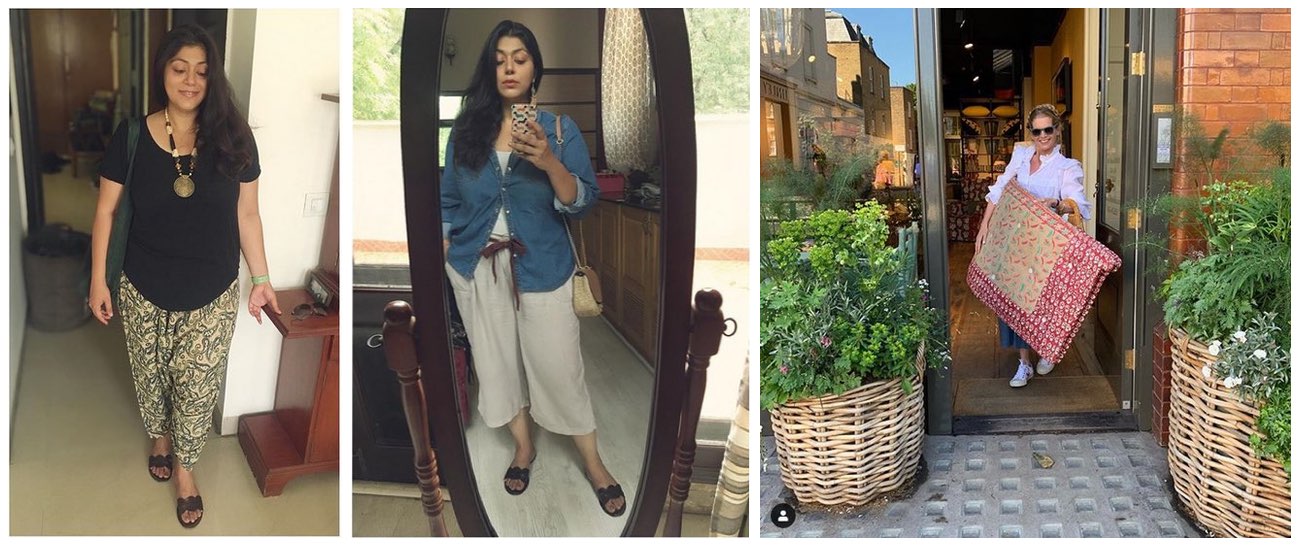This is Part 4 of our Environmental Series. Read Part 3 here.
The Game Plan (cont’d)
Step 4. Use cultural heritage to craft your identity.
Japanese Sashiko stitching provides a very interesting example of treating clothing as a living energy. In Japan during the Edo era the lower classes were forbidden to adorn their clothing. They primarily wore indigo-dyed cotton and linen, which due to bactericidal properties had a ward status. There was little opportunity to replace old clothes with new, and so the Sashiko stitching, a beautiful darn for mending the damaged pieces, was born. Despite the Spartan conditions of the period, the Sashiko stitching provided not just a unique adornment but also enabled clothing to serve multiple generations. Families developed a culture of respect towards clothing and a philosophy that multi-generation family energy empowered one’s life; clothes became family talismans. Soon the concept spread to the more powerful classes and a culture emerged around not throwing anything away, treating clothing with respect whilst they served their owner, and saying goodbye with dignity when it was time.
This concept is very much alive in Western culture. We all have things we love, whether it’s a toy we carried around as a kid, or a bra that is beat up and greyish, but we insist on wearing as our lucky bra.
The idea of how old can convert into a very useful new, without feeling like creativity brought on by clothing rationing, is having a renaissance and is championed by various figures. In her recent post blogger Sonalini Chaudhry (aka @theroundgirl) shared how after going 2 sizes up she converted her old dhoti pants “with a few deft turns of needle and thread”, and how she learnt to mix older items in her closet with newer ones to achieve fresh results. Another example is the adventurer and TV presenter Alexandra Tolstoy who shared how she patched up squab cushion to revitalise her family sofa (photos below).
It is silly to talk about passing a bra from generation to generation – bras are individual things. But imagine finding somewhere in the family bins your grandmother’s bra and bloomers with amazing embroidery and delicate seams? You might not even be sure what the bra is made of – it looks translucent and could be fine cotton or even organza. You realise your grandmother was not some ancient creature with a cane. She was spectacular. And suddenly you feel the warm support of previous generations and feel ignited to live a life that’s meaningful and extraordinary.
These values are universal. It is our heritage and collected energy that give us perspective as humans. Find that point in your history and in your wardrobe and set the course that rings true.
On the photos
The Sashiko Stitch. Illustration by Ms Pomelo.
Zack MacLeod Pinsent makes his own clothes and dresses in Regency style. Photograph: Antonio Olmos/The Guardian. Nora Thoeng’s style is inspired by 40’s and 50’s: ‘Dressing up brings so much joy into my life.’ Photograph: Nora Finds. From the man who wears 17th-century clothes to the woman whose outfits are straight out of the 1950s, six people explain their deep devotion to period dress. The Guardian.
Further reading
Sarah Butler. 2018. Is fast fashion giving way to the sustainable wardrobe? The Guardian.
Kelly-Leigh Cooper. 2018. Fast fashion: Inside the fight to end the silence on waste. BBC News.
Alabama Chanin. 2016. The History of Silhouettes. The Alabama Chanin Journal.
Gwen Cunningham. 2017. Step 2: Design Out Waste. Circle Textiles Program at Circle Economy.
Vanessa Friedman. 2017. The New Meaning of Fast Fashion. The New York Times.
Roger Harrabin. 2018. Fast Fashion is harming the Planet, MPs say. BBC Environment Analysis.
Harriet Johnson. 2018. Sashiko Embroidery: What it is and How to Do it. Clothing Care Co.
Ammar Kalia. 2019. From the man who wears 17th-century clothes to the woman whose outfits are straight out of the 1950s, six people explain their deep devotion to period dress. The Guardian.
Palko Karasz. 2019. France to end disposal of $900 million in unsold goods each year. The New York Times.
Molly St. Louis. 2017. Research Shows That the Clothes You Wear Actually Change the Way You Perform. Inc.
Brett Mathews. 2015. Closing the Loop: Circle economy work. MCL Global.
- Marie Kondo Folds a Perfect Underwear Drawer. New York Magazine.
Lucy Norris. 2014. The limits of ethicality in international markets: Imported second-hand clothing in India. Department of Anthropology, UCL.
Elizabeth Paton. 2019. In Britain, Politicians Shy Away From a Crackdown on Fast Fashion. The New York Times.
Elizabeth Paton. 2019. Will a ‘Fashion Pact’ Make Fashion Greener? The New York Times.
Jess Peter. Transformable Fashion: The Biggest Sustainable Clothing Trend That Never Was. The Fashion Studies Journal.
Adele Peters. 2019. This new IBM recycling tech makes brand new plastic from dirty bottles. Fast Company.
Adele Peters. 2019. All the ways recycling is broken—and how to fix them. Fast Company.
Anuschka Rees. How to assess the quality of garments: A Beginner’s Guide.
Nathalie Remy, Eveline Speelman, and Steven Swartz. 2016. Style that’s sustainable: A new fast-fashion formula. McKinsey & Company.
Tatiana Schlossberg. 2017. Fig Leaves Are Out. What to Wear to Be Kind to the Planet? The New York Times.
Elizabeth Segran. 2019. Zara built a $20B empire on fast fashion. Now it needs to slow down. Fast Company.
Ben Schiller. 2015. Robots Are Coming For Your Recycling (And That’s A Good Thing). Fast Company.
Elizabeth Segran, 2019. The ambitious quest to recycle the world’s bras. Fast Company.
Ushering in a Green 2019: Consumers Resolve to Be Less Wasteful this New Year. ThredUP News.
Andrew Winston. 2018. The Story of Sustainability in 2018: “We Have About 12 Years Left”. Harvard Business Review.
Kate Wood. 8 Reasons to rethink Fast Fashion. Lifehack.
Clothing Knowledge Hub. 2019. WRAP.








